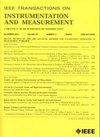Multisource Ensemble Network-Based Learning for Knowledge-Informed FeO Prediction in Sintering
IF 5.6
2区 工程技术
Q1 ENGINEERING, ELECTRICAL & ELECTRONIC
IEEE Transactions on Instrumentation and Measurement
Pub Date : 2025-06-25
DOI:10.1109/TIM.2025.3579835
引用次数: 0
Abstract
Lack of crucial state data is a common problem in processing industries, particularly in iron-making. Real-time measurements are often infeasible in harsh conditions such as high temperatures and heavy dust. In practice, technical experts rely on manual observations to make estimates; however, this knowledge is difficult to formalize and quantify. To date, few studies have effectively addressed these two challenges in a unified manner, hindering progress in data acquisition and process optimization. In this article, a novel knowledge-informed method that integrates a multisource fusion model with an ensemble network (KIMEN) is proposed to predict a key chemical indicator in the industry, the FeO content. First, a sParts-Pair comparing sorting (s-PCS) strategy was introduced for knowledge solidification. Furthermore, a knowledge-informed image processing scheme was proposed. In cases of data scarcity, we proposed a two-layer cascaded structure combining gradient boosting decision tree (GBDT) and gated recurrent unit (GRU), which functions as an ensemble recurrent network. When applied to the Guangxi Liuzhou Iron & Steel (Group) Company, the method demonstrates improved prediction performance and practical effectiveness. Experimental results show that the proposed KIMEN outperforms some conventional methods and state-of-the-art approaches. Ablation studies, small-scale experiments, and transfer learning experiments further validate the advantages of our method.基于多源集成网络的烧结FeO预测方法
缺乏关键的国家数据是加工业的一个普遍问题,尤其是在炼铁行业。在高温和重尘等恶劣条件下,实时测量通常是不可行的。在实践中,技术专家依靠人工观察来进行估计;然而,这些知识很难形式化和量化。迄今为止,很少有研究能够统一有效地解决这两个挑战,阻碍了数据采集和流程优化的进展。本文提出了一种将多源融合模型与集成网络(KIMEN)相结合的知识预测方法,用于预测工业中关键的化学指标——FeO含量。首先,引入零件对比对排序(s-PCS)策略进行知识固化。在此基础上,提出了一种基于知识的图像处理方案。在数据稀缺的情况下,我们提出了一种结合梯度增强决策树(GBDT)和门控循环单元(GRU)的两层级联结构,作为一个集成循环网络。通过对广西柳州钢铁(集团)公司的实际应用,表明该方法具有较好的预测效果和实际效果。实验结果表明,所提出的KIMEN方法优于一些传统方法和最新的方法。消融实验、小尺度实验和迁移学习实验进一步验证了该方法的优越性。
本文章由计算机程序翻译,如有差异,请以英文原文为准。
求助全文
约1分钟内获得全文
求助全文
来源期刊

IEEE Transactions on Instrumentation and Measurement
工程技术-工程:电子与电气
CiteScore
9.00
自引率
23.20%
发文量
1294
审稿时长
3.9 months
期刊介绍:
Papers are sought that address innovative solutions to the development and use of electrical and electronic instruments and equipment to measure, monitor and/or record physical phenomena for the purpose of advancing measurement science, methods, functionality and applications. The scope of these papers may encompass: (1) theory, methodology, and practice of measurement; (2) design, development and evaluation of instrumentation and measurement systems and components used in generating, acquiring, conditioning and processing signals; (3) analysis, representation, display, and preservation of the information obtained from a set of measurements; and (4) scientific and technical support to establishment and maintenance of technical standards in the field of Instrumentation and Measurement.
 求助内容:
求助内容: 应助结果提醒方式:
应助结果提醒方式:


